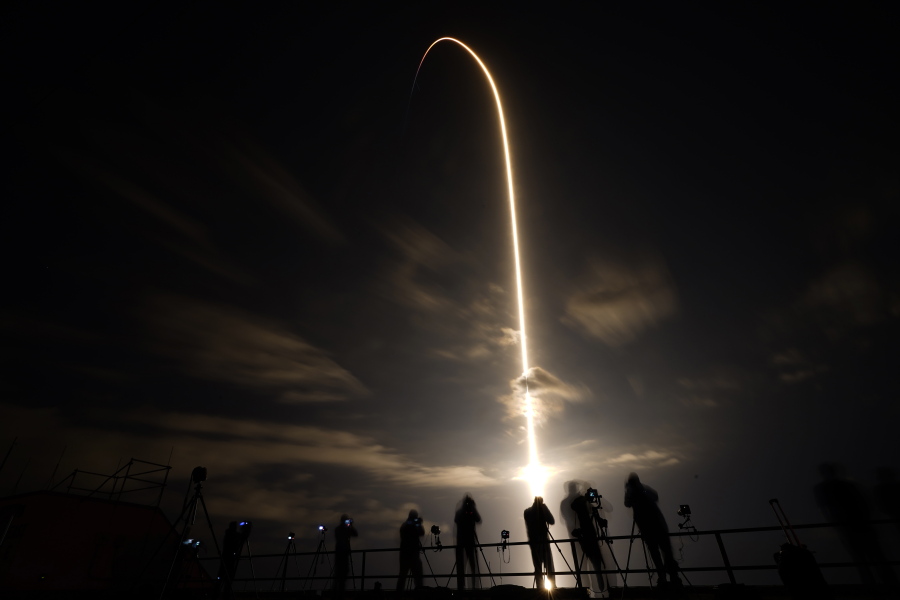CAPE CANAVERAL, Fla. — SpaceX’s third crew has an attack helicopter pilot, a former Air France pilot, a Japanese rocket scientist and an oceanographer.
The four veteran astronauts should reach the International Space Station on Saturday for a six-month stay, following Friday’s liftoff from NASA’s Kennedy Space Center.
A brief look at each:
• Shane Kimbrough, 53, the flight’s commander, is a retired Army colonel who led a helicopter platoon during the 1991 Gulf War. His love of space came early: His grandparents lived near Florida’s Kennedy Space Center. The son of an Army aviator who flew in Vietnam, Kimbrough grew up in Atlanta. He taught math at the U.S. Military Academy and jumped out of planes for the Army, before moving to Houston in 2000 to work with NASA’s shuttle training aircraft. He became an astronaut in 2004, flying on the shuttle in 2008 and launching eight years later in a Russian capsule to the space station he helped build. He and wife Robbie have three grown children.
• Megan McArthur, 49, the pilot, is flying in the same seat as husband Bob Behnken did during SpaceX’s debut crew launch nearly a year ago. This time, he was the one with their 7-year-old son, Theo, waving goodbye. It’s been 12 years since McArthur last rocketed into orbit, aboard a shuttle on NASA’s final Hubble Space Telescope repair mission. She’s eager to see the space station, after two decades as an astronaut. Born in Hawaii but raised all over in a Navy family, McArthur conducted graduate research in underwater acoustics at the Scripps Institution of Oceanography, led diving expeditions and tested water equipment. She became an astronaut in 2000.
• Thomas Pesquet, 43, was flying for Air France when the European Space Agency chose him as an astronaut 12 years ago. The son of schoolteachers, Pesquet found space “cool” while growing up in Normandy, and earned a degree in spacecraft design. He joined the French Space Agency as an engineer in 2002. Two years later, Air France tapped him for its flight training program. He logged 2,300 flight hours on commercial airliners before becoming an astronaut in 2009. Pesquet launched on a Russian Soyuz rocket to the space station in 2016 for a six-month mission. His longtime partner, Anne Mottet, works for the United Nations’ Food and Agriculture Organization.
• Akihiko Hoshide, 52, joined the Japanese Space Agency right out of college in 1992 as an engineer, working on the H-II rocket. He made the astronaut cut seven years later and helped develop Japan’s Kibo lab for the space station. He installed Kibo, or Hope, in 2008, launching aboard shuttle Discovery. Hoshide returned to the station in 2012 for six months, flying from Kazakhstan. He’ll join Japan’s Soichi Noguchi at the station, before Noguchi departs next week on his own SpaceX ride. “It will be really nice to see him — and we have the luxury of hugging in orbit, not like the situation on the ground” because of the pandemic, Hoshide said. He’s married with an 11-year-old son.



